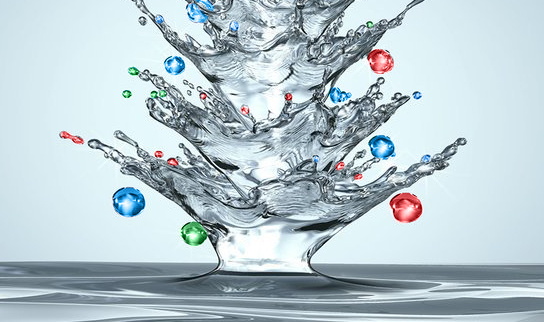
The answers were obvious. Until a new question came to me in a dream…
I am always amazed by our subconscious ability to grapple with challenges. We puzzle over a problem for hours, days, and weeks (sometimes even longer). We think we see the problem from every possible perspective and are applying every available tool in our quest to develop potential solutions. We go to bed frustrated and exhausted; yet our brain is still wide awake, racing to find the answer.
In the morning, as we make the transition from the world of sleep and dreams to the world of daily reality, we often struggle with the threads. What was the problem again? And our best solution was what? Sometimes, as we burn off the morning fog over a pot of coffee, we might even realize we’ve been trying to solve the wrong problem. This happened to me recently.
I had been musing over solutions on providing drinkable water to people around the world. It wasn’t a project I was pursuing seriously. More of a question that had been on my mind. Here in the US, we rarely give water a second thought. Construct a $1 billion+ purification plant and underground pipe distribution system and you can serve millions of customers. We’ll even argue the merits and purity of tap water vs. bottled water. But there was a bigger question.
How do you deliver fresh water in areas of the world where there is no infrastructure? ( and no money to invest in building it? )
A few clicks on Google yielded numerous organizations formed to address that problem, including Water.org, [link], The Water Project [link], and Water for the World [link]. In various combinations of nonprofit/corporate partnerships, these organizations seek to provide water in third-world developing countries, war-torn countries, and disaster-ravaged communities.
But something still bothered me – and I couldn’t quite pinpoint it.
That night, I had a dream. It consisted of water drops and thirsty people – legions and legions and legions of thirsty people.
I woke up with a different perspective. Instead of having a centralized water treatment center with a distribution network, what if we focused instead on a portable, inexpensive method to make the available water clean and drinkable? The problem(s) changed substantially.
How do you make the water you already have drinkable?
How do I, as an individual, get drinkable water – simply and easily – from the salty, polluted, or otherwise toxic water that is already here?
What portable, self-contained water delivery “thing” could we design that could be produced quickly and inexpensively?
At that point, the problem solver in me took over and I started solving THAT problem.
I started thinking about plastic fabrication techniques, laminated materials, and lightweight, low-cost designs that be easily fabricated and distributed. I started sketching a water bag with internal surfaces impregnated with anti-fungal and anti-biotic treatments to address issues in the area being served. Internal permeable membranes (think Gore-tex) would filter the water. We could color-code the bag’s exterior so relief workers knew the bags capabilities and possibly shelf-life. A local/regional fabricator could be supplied with the raw materials/treatments and the bags could be constructed as close as possible to the population employing them. Even the specific form of bag – tote, duffel, backpack, shoulder-carry – could be modified according to local customs. Just like any bag, it would be extremely light, flexible, and collapsible, making it easier to ship large quantities. We could even strive for 100% renewable materials.
Be willing to have your answers questioned
It wasn’t until later that I realized my dream was not about novel ideas for the delivery of fresh drinking water, it was my subconscious mind at work, sifting and sorting information, challenging old answers, asking new questions, contemplating new ideas.
This is often a key to a creative solution: instead of just looking for the right answer, try looking for the right question.
Now, if I can only figure out a way to bill my clients for my dreams . . .
– Eric
P.S. The ideas presented in this essay are the result of an afternoon of intriguing Google research (followed by a good night’s sleep) and a few quick sketches. I don’t really have a plan to take these ideas anywhere. However, if you are involved with a group that deals with water issues and see merit in these ideas, feel free to drop me a line and I’ll share my thoughts with you.








Patent the idea and sell the rights to some one like the manufacturer of Camelback.
I’d like to make the technology open source, and make it available to anyone, anywhere. But perhaps some kind of IP protection is needed, in case someone tries to copy and market the idea to a fat profit market.
Hi Eric
How would this work exactly? Can you post more details on your idea?
It sure is a noble cause. 🙂
I do not have much more detail. Then again, the concept is pretty simple. I think the shape of bag itself is one of the more important details. I envision it being formed from two flat pieces of film, with the internal filters also being two pieces of film. The perimeter would be heat sealed together, forming an enclosed shape. If the films are flexible enough, the bag could be designed to expand into a number of different shapes: a cube, or a sling, or a tear drop shaped flask. The opening could be a simple flap with a sealing edge, sort of like a zip-lock bag.
The mechanics of this are simple, but some form studies would need to be done to confirm they can be fabricated, and also conform to local custom. And the internal filters need some development, along with some technical expertise that I do not have.
Hi Eric, you should launch that idea yourself on kick starter!
Best,
Steve Secviar